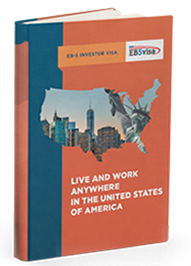Contact us for more information.
EB-5 Visa Guide
EB-5 Regional Center
EB-5 is one of the most popular ways for non-American individuals to come to the United States, and live and work there. The foreign investors who are applying for an EB-5 visa get a green card if they invest a certain amount of money into an absolutely new commercial enterprise that would facilitate the growth of the economy of the United States of America. It should be creating at least 10 new full time jobs per investor. For two years, the applicant gets a conditional permit. Upon completion of two years of issuing the conditional permit, if all the conditions of the EB-5 visa, like the minimum investment, the job creation, etc. get satisfied, the conditions laid down on the green card permit are lifted and the applicant and his or her dependents become permanent residents of the United States of America.
Read moreCommon Risks of Investing in EB-5 Projects
There are several risks of investing in EB-5 projects that investors should be aware of. While it may sound tempting to get a Green Card and permanent U.S. residency, understanding the risks involved in investing in EB-5 projects will help immigrant investors to make informed choices.
Read moreWhy Performing Risk Analysis and Due Diligence is Important in EB-5 Investments
The EB-5 investor program of the U.S. immigration is seeing a lot of takers and is enjoying a huge popularity ever since it was initiated. An investor could take up a regional center project, a direct EB-5 project proposal or pool up his investment across projects, making a total investment of about $900,000 to $1,800,000 plus the processing overhead cost, legal and filing fees depending on the type of project and generate a certain amount of direct employment for the citizens.
Read moreWhy You Need an Attorney to Apply for an EB-5 Visa
The EB-5 program began in the 1990s, to encourage foreign investors to invest in the United States and create American jobs in exchange for the U. S. Green card. EB-5 is an investment visa leading to a Green Card, where the applicant is required to make $900,000 to $1,800,000 plus the processing overhead cost, legal and filing fees of investment in a new venture or in rural or economically less developed areas or in Government designated regional centers with the aim of generating jobs, generally at least 10 full time jobs.
Read moreTargeted Employment Area or TEA
Assigning a Targeted Employment Area to an EB-5 visa project is very important, and essential to qualify for the green card status. Unlike the designated one million American dollars amount, an EB-5 applicant can avail an option for investing half the predefined amount, provided he or she is ready to invest in a project catering to rural or economically backward area. A TEA is to be requested by the applicant in his or her I-526 petition, and the regional center has to confirm the request for the EB-5 project to proceed ahead.
Read moreWhat are EB-5 Projects?
EB-5 is an investment visa leading to a Green Card, where the applicant is required to make $900,000 to $1,800,000 plus the processing overhead cost, legal and filing fees of investment in a new venture or in rural or economically less developed areas or in Government designated regional centers with the aim of generating jobs, generally at least 10 full time jobs.
Read moreFilling the I-526 Form
I-526 is one of the first forms you will fill as part of applying for an EB-5 visa. It is your actual application form for the visa. The form is pretty detailed and thorough, and could scare a lot of applicants, may also confuse them.
Read moreSeeking Professional Help for EB-5 Visa
EB-5 is an investment visa leading to a Green Card, where the applicant is required to make $900,000 to $1,800,000 plus the processing overhead cost, legal and filing fees of investment in a new venture or in rural or economically less developed areas or in Government designated regional centers with the aim of generating jobs, generally at least 10 full time jobs.
Read moreE-2 Visa and EB-5 Visa
With the goal of job creation and economic development in areas that were not so developed, the United States of America launched the two investment visas – the E2 visa and the EB-5 visa. Through these work visas, foreign nationals get an authorization to work in the United States of America by investing in the country in either an existing entity or creating a new entity altogether and generating jobs for the American citizens in return.
Read more


 English
English.png) Chinese(Simplified)
Chinese(Simplified) Italian
Italian Polish
Polish Portuguese
Portuguese Russian
Russian Spanish
Spanish




